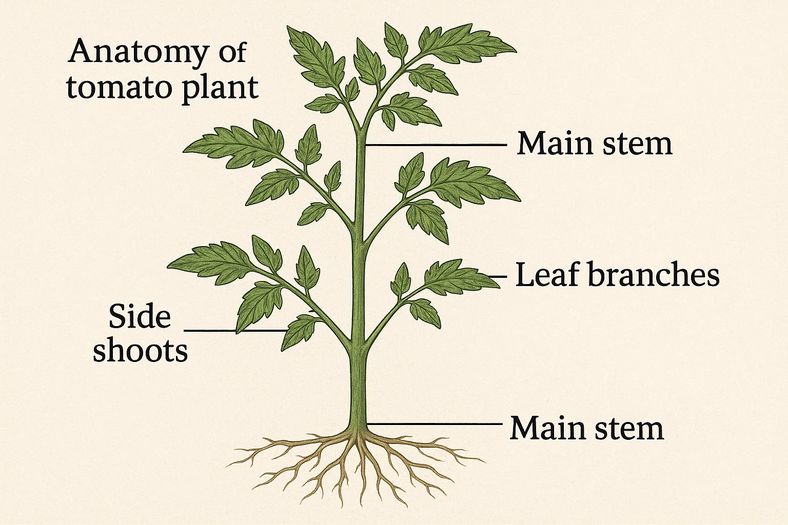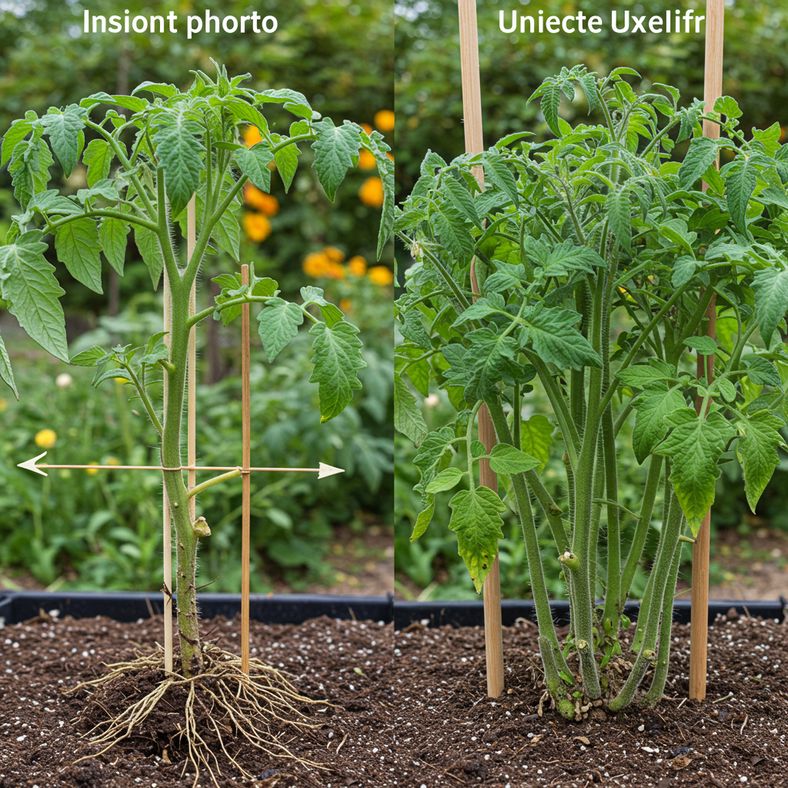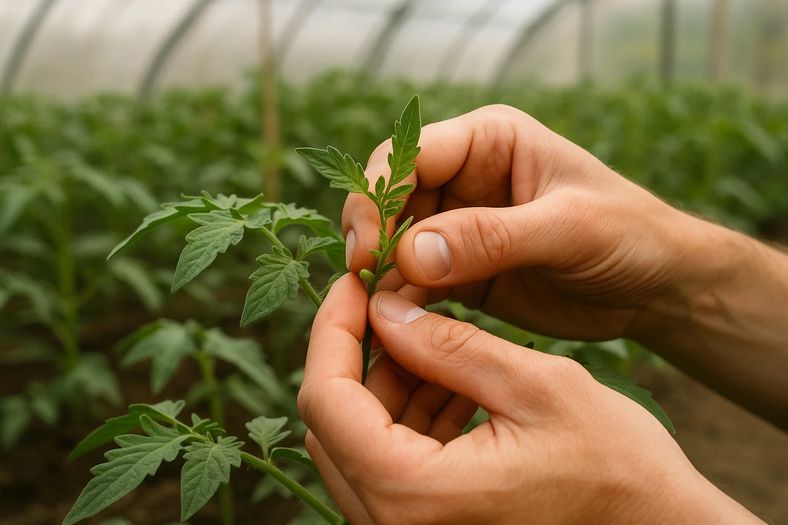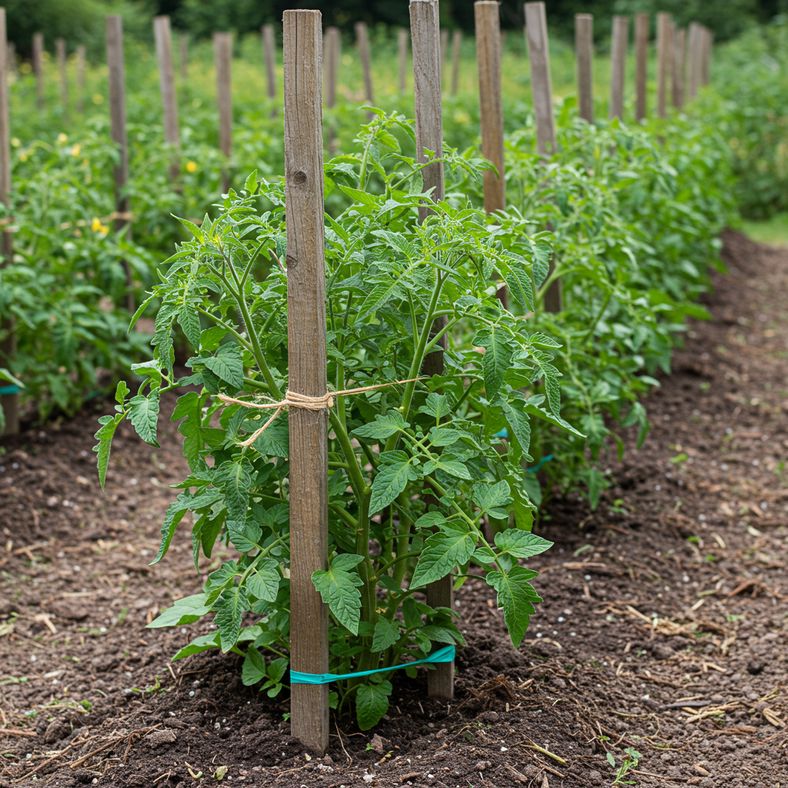What Happens If You Don't Pinch Out Tomatoes: Complete Guide to Tomato Shoot Management
Not all gardeners pinch out tomato shoots, but understanding what happens when you don't can help you make the right choice for your garden. Learn about the benefits and drawbacks of leaving side shoots on your tomato plants.

Many gardeners wonder whether they should pinch out tomato shoots or leave them to grow naturally. While pinching out side shoots (also called suckers) is a common practice, not all gardeners remove them, and surprisingly, you can still achieve successful harvests without being fastidious about this task.
Understanding what happens when you don't pinch out tomato shoots can help you decide the best approach for your garden, taking into account your available time, space, and desired outcomes.
What Are Tomato Side Shoots and Why Do People Remove Them?

Tomato side shoots, also known as suckers, are the shoots that grow between the main upright stem and the leaf branches of your tomato plant. These shoots typically grow at a 45-degree angle and appear regularly throughout the growing season.
It's important to note that you should only consider removing shoots from cordon-type tomatoes - the tall varieties that need support with canes or string. If you remove shoots from bushy varieties, you'll significantly reduce your harvest as these plants are meant to grow with multiple stems.
The practice of pinching out shoots is intended to help gardeners manage their plants more effectively, but it's not absolutely necessary for a successful harvest.
What Happens If You Don't Pinch Out Tomato Shoots

When you leave side shoots to grow without pinching them out, several things will happen to your tomato plants:
Plant Structure and Management
- Increased plant size: Your plants will become much larger and bushier, requiring more space in your garden
- Heavy, tangled growth: The plants may become difficult to manage and support, with branches potentially tangling together
- Support challenges: The additional weight may require stronger or additional support structures
Fruit Production Changes
- More but smaller fruit: You'll typically get a higher quantity of tomatoes, but they may be smaller in size
- Energy distribution: The plant spreads its energy between growing foliage and producing fruit
- Extended harvest period: More stems mean more flowering points and potentially a longer harvest season
Plant Health Considerations
- Reduced air circulation: Dense foliage can limit airflow around the plant, potentially increasing disease risk
- Increased humidity: More leaves create a more humid microenvironment within the plant
- Harder monitoring: It becomes more difficult to spot problems or pests within the dense foliage
The Benefits of Not Pinching Out Shoots

While many gardening guides emphasize the importance of pinching out shoots, there are actually several advantages to leaving them:
Increased Yield Potential
More stems mean more flowering trusses, which can result in a higher overall yield of tomatoes. While individual fruits may be smaller, the total weight of your harvest could be greater.
Time and Labor Savings
Not having to regularly check and pinch out shoots saves considerable time during the busy growing season. This is particularly beneficial for gardeners with limited time or those growing many plants.
Natural Plant Growth
Allowing the plant to grow naturally means you're working with its inherent growth pattern rather than constantly fighting against it. Some gardeners find this approach less stressful for both themselves and their plants.
Backup Production
If the main stem becomes damaged or diseased, having multiple stems provides backup production points, potentially saving your harvest.
When You Should Consider Pinching

While you can successfully grow tomatoes without pinching shoots, there are situations where you might want to consider selective removal:
Space Limitations
If you're growing in a small greenhouse, polytunnel, or limited garden space, pinching out shoots can help keep plants manageable and prevent overcrowding.
Disease Prevention
In areas with high humidity or where blight is common, removing some shoots to improve air circulation can be beneficial for plant health.
Fruit Size Preference
If you prefer larger tomatoes over quantity, pinching out shoots will direct more energy into fewer, bigger fruits.
Late Season Management
Even if you don't pinch shoots all season, removing some later in the year can help redirect energy into ripening existing fruit before the first frost.
Tips for Managing Unpinched Tomato Plants

If you decide not to pinch out your tomato shoots, here are some strategies to help you manage your plants effectively:
Provide Strong Support
- Use sturdy canes, stakes, or trellises that can handle the extra weight
- Consider using tomato cages designed for indeterminate varieties
- Tie stems regularly as they grow to prevent breakage
Improve Air Circulation
- Space plants further apart than usual to compensate for their larger size
- Remove lower leaves that touch the ground
- Selectively remove some internal foliage to improve airflow
Monitor Plant Health
- Check plants more frequently for signs of disease or pest problems
- Be prepared to remove diseased foliage quickly
- Ensure adequate watering as larger plants will need more water
Strategic Timing
- You can still pinch out the growing tip late in the season to focus energy on ripening
- Remove shoots that are growing in unmanageable directions
- Consider pinching shoots that appear very late in the season